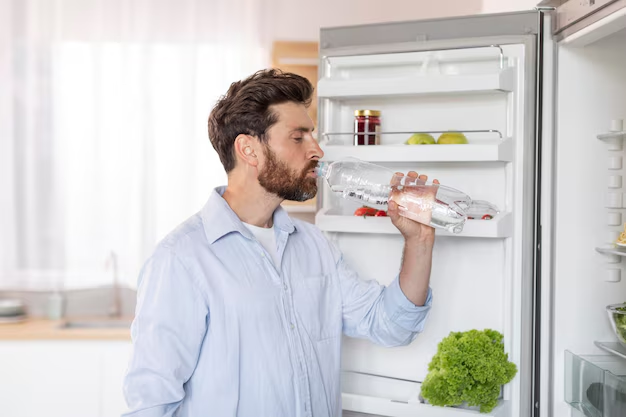Optimal Temperatures for Your Refrigerator and Freezer: Expert Tips for Freshness and Safety
In a world where freshness is key and preserving the nutritional value of your food matters more than ever, correctly setting the temperatures of your refrigerator and freezer can make all the difference. Keeping your perishable items at the right temperature is crucial not only for maintaining their quality but also for ensuring food safety and energy efficiency.
Whether you just bought a new appliance or are tweaking your old faithful, this comprehensive guide will delve into everything you need to know about optimizing your refrigerator and freezer temperatures. Read on as we explore tips, tricks, and insights that can help you keep your meals fresh, your ice pristine, and your energy bills in check.
Why Temperature Matters in Refrigeration
Food Safety is perhaps the most critical reason to regulate the temperatures of your refrigerator and freezer. Refrigerators are designed to slow down the activity of bacteria, reducing the rate at which your food spoils. For freezers, maintaining a consistent temperature ensures that food remains frozen and safe for longer periods.
Quality Preservation involves keeping food items at the right temperature to prevent them from becoming too soft or too hard, affecting their taste and texture.
Energy Efficiency is a compelling reason to choose and maintain the correct settings. Adjusting your refrigerator or freezer to just the right temperature ensures effective cooling while avoiding unnecessary energy consumption.
Ideal Temperatures: The Gold Standard
Refrigerators: Keeping It Cool but Not Too Cold
The optimal refrigerator temperature is typically around 37°F to 40°F (3°C to 4°C). This range ensures that perishable foods remain fresh without freezing. Here's why:
- Bacteria Slowdown: At these temperatures, bacteria grow at the slowest rate, reducing spoilage and keeping your food safe.
- Energy Efficiency: Excessively cold settings can jack up energy costs and potentially freeze your perishables.
Freezers: Frozen Solid Performance
For freezers, maintaining a temperature near 0°F (-18°C) is recommended. This prevents the growth of bacteria by keeping food items frozen solid, which locks in freshness and extends shelf life.
- Food Longevity: At 0°F, your frozen goods, such as meats and vegetables, maintain their quality over an extended period.
- Texture and Flavor: Freezing at this temperature helps maintain the original texture and flavor of food when thawed.
Navigating Temperature Settings and Features
Modern Refrigerator Features: Making Life Easier
Today's refrigerators come equipped with a variety of features that can aid in temperature management:
- Smart Sensors: These help maintain consistent temperatures even as the fridge opens and closes.
- Adjustable Shelves: Better organization can improve airflow and cooling efficiency.
- Door Alarms: Notify you if the door has been left open, helping maintain the internal environment.
Freezer Functions: Bells and Whistles That Matter
Modern freezers often incorporate special zones and settings to optimize storage:
- Quick Freeze Option: This setting lowers the freezer temperature temporarily to rapidly freeze new additions.
- Frost-Free Technology: Helps eliminate the need for manual defrosting, maintaining consistent temperatures.
Tips for Maintaining Optimal Temperatures
Here are some straightforward tips to keep your refrigerator and freezer running efficiently:
Refrigerator Maintenance Tips
- Avoid Overpacking: Too much food can restrict airflow, leading to uneven cooling.
- Regular Cleaning: Dust-covered coils can hinder performance, so clean these areas at least twice a year.
- Check Rubber Seals: Make sure door seals are airtight to keep cool air from escaping.
Freezer Efficiency Tips
- Organize Wisely: Group similar items to find them easily, reducing the time the door stays open.
- Thaw Properly: Thaw foods in the fridge to utilize the cooling energy they release.
- Limit Frequent Access: Minimize how often the door is opened to retain cold air.
Common Temperature Troubleshooting
Even with the best settings, refrigerators and freezers can sometimes exhibit issues that affect their efficiency and performance. Here’s a quick guide to some common problems and fixes:
Refrigerator Woes
- Uneven Temperatures: If the fridge has hot and cold spots, consider reorganizing to improve air circulation.
- Warm Foods: Could be a sign of poor sealing. Check the rubber gasket for damage.
- Freezing Liquids: Adjust the thermostat as your fridge might be set too cold.
Freezer Issues
- Frost Build-Up: Usually caused by excess moisture or a faulty door seal. Keep an eye on the gasket and ensure it’s working properly.
- Inconsistent Freezing: Rearrange items and verify that the vents aren’t blocked, ensuring proper airflow.
A Summary of Key Tips for Perfect Refrigeration
🔹 Recommended Settings:
- Refrigerator: 37°F to 40°F (3°C to 4°C)
- Freezer: 0°F (-18°C)
🔹 Maintenance Tips:
- Keep coils clean and ensure door seals are tight.
- Avoid overstuffing for better air circulation.
🔹 Features to Utilize:
- Leverage smart sensors and quick freeze options for optimal performance.
The Role of Ice Makers in Temperature Regulation
Ice makers are an integral part of many refrigerator units and require careful maintenance and thermostat settings to function efficiently. A well-maintained ice maker ensures consistent ice production without affecting the temperature of the freezer section.
- Regular Cleaning: Routine cleaning ensures the ice maker doesn’t add unnecessary load to the freezing system.
- Check for Clogs: Blockages can reduce efficiency and raise compartment temperatures.
Ultimately, the goal of managing your refrigerator and freezer temperatures is not just about preventing spoilage or saving money, but about creating a lifestyle where food is stored safely and efficiently. Understanding and implementing the optimal temperature settings and practices empowers you to make informed decisions that can help you maintain a healthy and eco-friendly home environment.
With these insights, you're now better equipped to set up and maintain your refrigerator and freezer for optimal performance and efficiency. Keep your perishables fresh, your energy consumption minimal, and your food safety efforts top-notch by adhering to these guidelines and practices.
